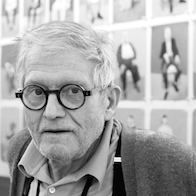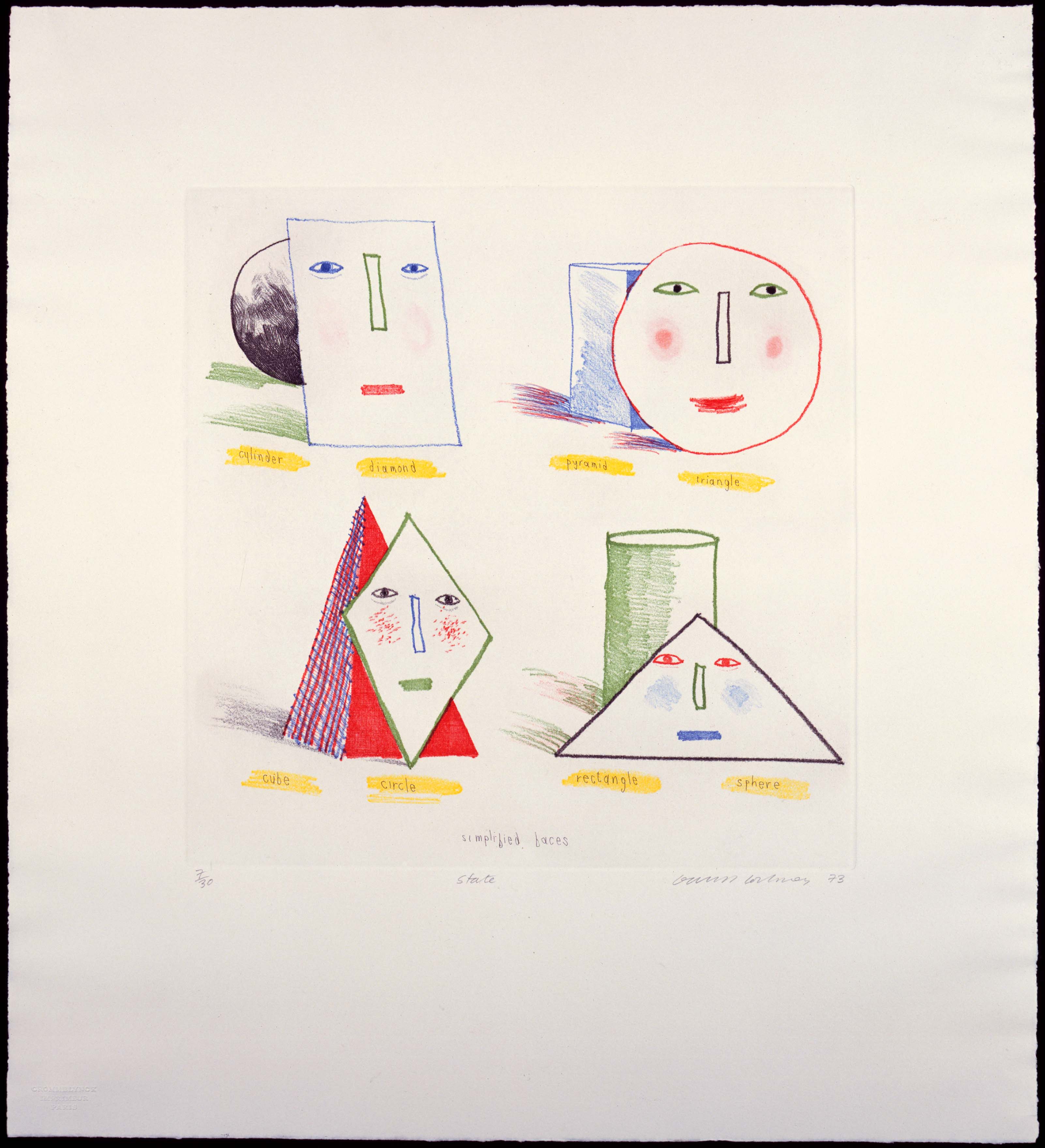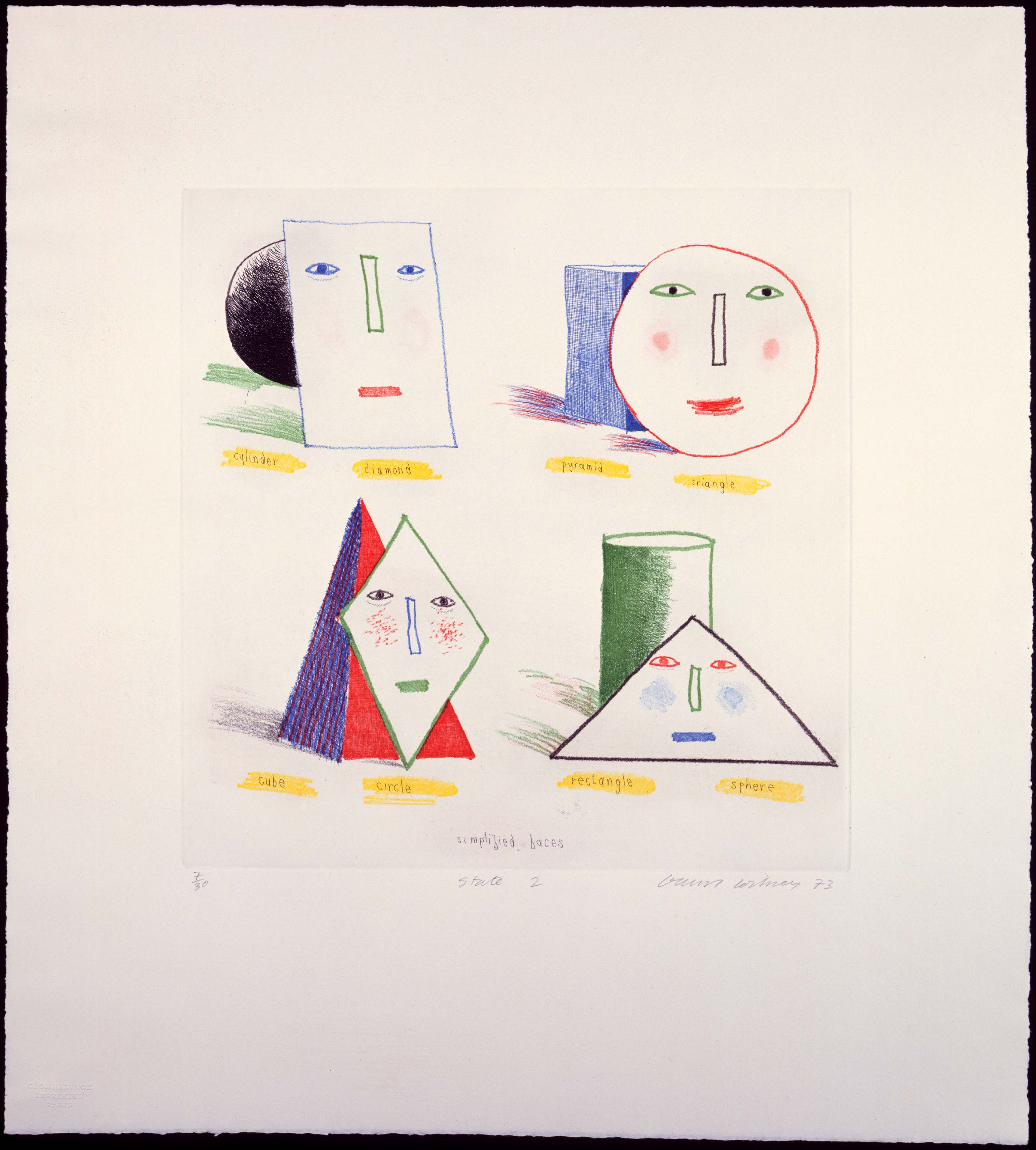
Nationality
British
Education
- 1953-57: Bradford School of Art
- 1959-62: Studied at Royal College of Art
Taught
- 1960: University of Iowa
- 1965: University of Colorado
- 1966-67: Universities of California, Los Angeles and Berkeley
Background
Born in Bradford, Yorkshire, Hockney first studied at Bradford School of Art and then, as a conscientious objector, worked in hospitals to serve his National Service. By 1962 he was completing his studies at the Royal
College of Art; however, he refused to write a dissertation (required for the final examination), saying he should be assessed solely on his artworks. When the College said it would not let him graduate in 1962, Hockney
drew a sketch (The Diploma) in protest.
However, recognising his talent and growing reputation, the RCA changed its regulations, awarding the diploma and a gold medal, which he accepted (wearing a gold lamé jacket).
He first visited the USA while a student and moved to Los Angeles in the middle of the decade. There he made his first swimming pool paintings and taught at several universities. In later years the artist returned
to live, work and exhibit in his native Bradford, maintaining residences in London and California.
The artist
The artist has gained an international stature not only as a painter but also as a stage designer, printmaker and photographic collagist. He is the author of several books in which he explores theories and methods of
representation that have been further explored through film and television.
His work has been the subject of numerous exhibitions at major institutions all over the world. His painting of a coppice in native Yorkshire, between Bridlington and York (Bigger Trees Near Warter, 2007), painted
– mostly in situ - on 50 individual canvases, was exhibited at the Royal Academy and later gifted to the Tate Gallery.
Although he declined a knighthood, Hockney accepted the Order of Merit (OM) and has been made a Companion of Honour (CH), in addition to numerous professional and academic honours.
Simplified Faces, I & II
Crommelynck had been Picasso's etching printer for twenty years and Hockney had been interested in Picasso's work since his first mature production, admiring (as he stated in a 1974 interview) 'that kind of freedom as regards
form, going from one style to another, exactly as he wished'. Hockney certainly combined different graphic techniques on the same plate in the second etched Picasso portrait Artist and Model (1973-74). It is not
surprising then that the images in the plate (in which he experimented with colour etching alongside Picasso's printer, soon after Picasso's death) should resemble Picasso's 1951 bronze Head of a Woman.
However, Simplified Faces contain two further sorts of reference. Hockney had mocked the notion of modernistic simplification in titles such as Picture of a Pointless Abstraction Framed Under Glass (1965).
Ironic play with geometric forms and patterns alongside figurative images had been a characteristic of Hockney's early mature paintings, though this had tended to disappear in the work around 1970. The involvement with
Picasso's image and memory in 1973-74 heralds a return to a preoccupation with artifice that became clear by the time of the suite of colour etchings entitled The Blue Guitar (1976-77). However, the ironic take
on 'simplification' may refer to the manipulation by modernist theory and practice of Cézanne's advice to Bernard to 'treat nature by means of the cylinder, the sphere, the cone'. This rather academic advice to a young
painter in the context of a discussion of space and form had been manhandled by modernism to justify geometric abstraction, certainly never Cézanne's intention.
Hockney adds a playful faux-naïf touch to that canonized advice and its artistic progeny. The second art historical reference contained within these prints is deliberate mislabelling, learned from Magritte as a means of undermining
the 'common sense' of received wisdom. The demonstrations do not equate with the apparent captions. This is not a pyramid or diamond, a cylinder or a circle. Simplified Faces have the character of trial pieces, but they
herald a period of artistic renewal in Hockney's work that occurred in the mid-1970s.



